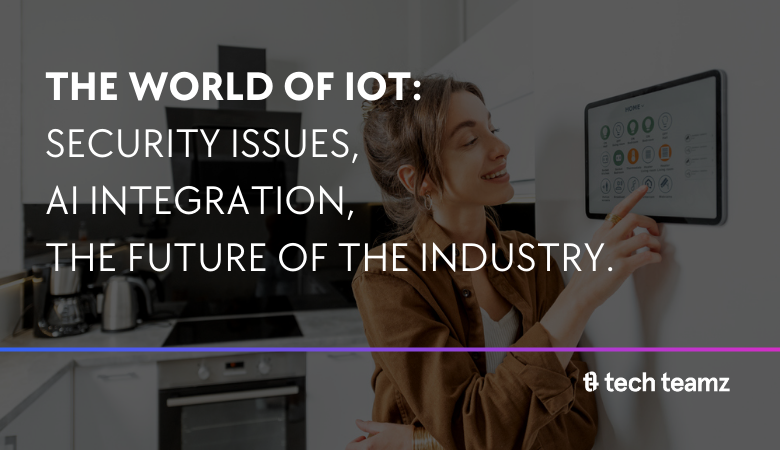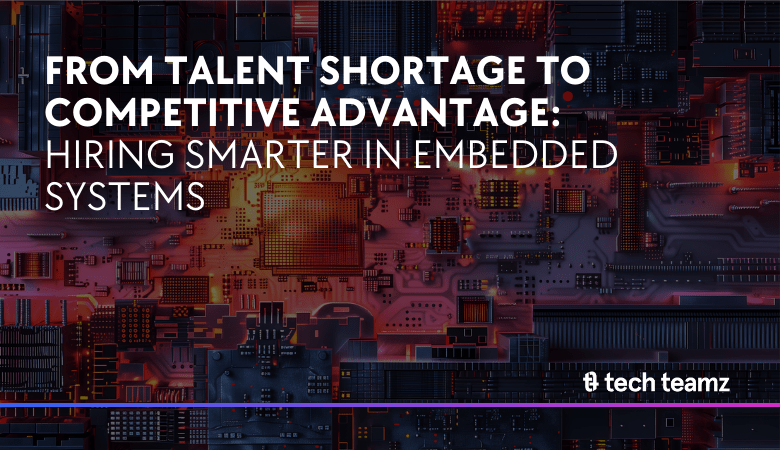IoT devices are all the rage, and there are across every industry, and in our homes. Many houses worldwide have cloud-based voice services like Alexa. The healthcare field benefits every day from things like wearable ECG Monitors or smart inhalers. Companies, such as Google and Novartis, have been working on contact lenses that can measure glucose levels in tears. This is especially life-changing for diabetes patients, who would have a non-invasive way to know when to inject insulin.
The IoT industry shows no signs of slowing down. It is actually expected that by 2030, 75% of all devices will be IoT. To get a more accurate assessment of the state of the industry, we talked to Lucas Freites, one of our embedded engineers. You can watch our podcast here:
https://www.youtube.com/watch?v=uEbVDJSplPM
IoT: trends and innovations
According to Lucas, there are four major trends in the IoT industry at the moment:
- 5G Wireless connectivity: it’s one of the basics when it comes to the functionality of IoT networks. It offers the power to achieve the full potential of IoT.
- Mesh networks: with this kind of tech, devices can connect in a non-hierarchial way to route data across the network. Each device participates in the data transmission on the network. If the IoT device cannot run on Wi-Fi or 5G, a mesh network gives it a wide platform to expand its wireless range.
- LoraWan: for devices that need optimal, low-power communication, this is key tech.
- Bluetooth Low Energy: designed for short-range data exchange with minimal power consumption. This is commonly used in applications like fitness trackers and smart home devices.
IoT, climate change, and environmental issues
Although the main focus of IoT isn’t green tech, we need to acknowledge that it’s possible to take advantage of LTE devices, allowing companies to make a more efficient use of their resources. As Lucas put it, a smart city could require certain information from IoT devices to run things like public transport in a much better way than today. Sensors in factories could improve productivity, and even our daily tasks could be improved by using the data of our IoT devices.
Simply put, although the main focus isn’t the environment, a better use of resources has a double purpose: it improves efficiency, and it has less impact on the ecosystem.
Safety issues
One of the main concerns in the IoT industry is data safety. Just in 2023, the highest number of vulnerabilities were discovered in TV sets (34%), smart plugs (18%), digital video recorders (13%), and routers (12%). A report by Zscaler’s ThreatLabz revealed a 400% increase in IoT malware attacks compared to 2022.
The average home has at least 21 devices connected. The variety between these implies that there’s a difference between threats as well. Two of the most common vulnerabilities are buffer overflow (28.25%) and denial of service (27.20%). These, of course, aren’t the only ones.
What are the solutions?
Technologies like Blockchain represented a shift in the paradigm of cybersecurity. This software allows for decentralized data exchange, which can become essential for IoT devices in the following years.
Blockchain tech has proven that data verification and user validation are quite efficient. Even though it can take more computational resources than current safety measures, these security issues need stronger solutions than what we have today.
The future of the IoT industry and AI
Artificial Intelligence took the tech world by storm. For the IoT industry, this means that there’s a possibility to integrate the data generated by smart devices to further personalize applications, making them a lot more adaptable to specific needs.
Digital Twins
This concept was created based on the previous idea. In a nutshell, a digital twin is a digital representation of something (from a car to a smart city). This representation is used to develop functionality and software in realistic and more efficient ways. The software can be tested and developed in the digital twin before deploying it in the real world. Companies ensure a positive, bug-free experience this way.
Things progress quite fast but Lucas has realistic expectations: we can start seeing these changes in our day-to-day lives in the next four to five years.
Final thoughts
Despite IoT’s considerable security issues, experts work every day to bring forth efficient solutions that companies can take advantage of when launching new products to the market.
Concepts like the digital twins, or using Blockchain tech to deal with cyberthreats might have been too outlandish a few years ago, but today, they’re poised to become a reality.
Only time will tell.




